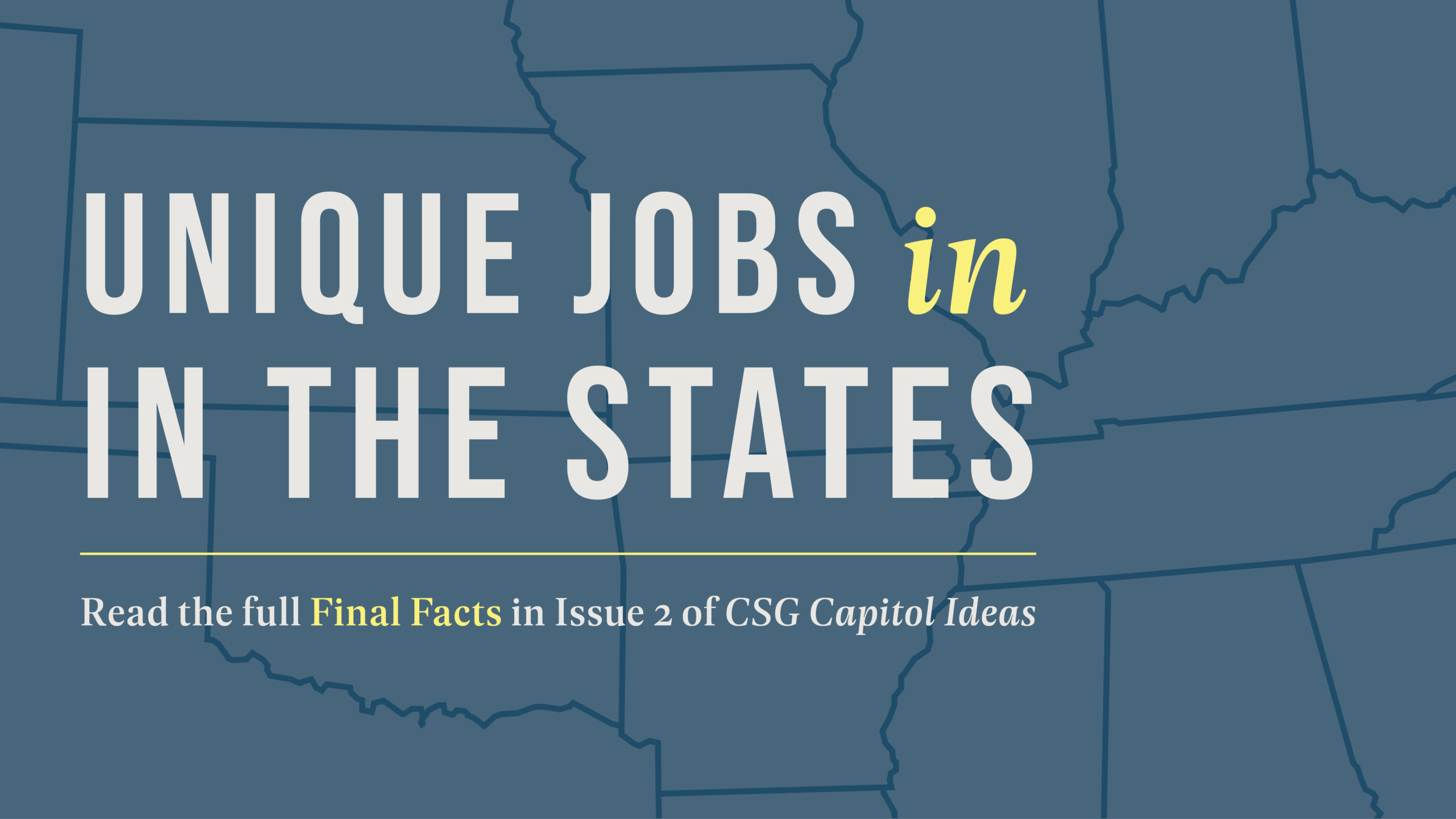The American Rescue Plan Act of 2021, a $1.9 trillion economic relief package, was signed by the president on March 11. Part of this package includes the Coronavirus State and Local Fiscal Recovery Fund, which provides approximately $350 billion in new federal fiscal assistance for states, territories, tribes, counties and municipalities. An additional $10 billion is available to states, territories and tribal governments for critical capital projects that directly enable work, education and health monitoring in response to COVID-19.
MENTAL HEALTH INSURANCE PARITY: STATE LEGISLATIVE AND ENFORCEMENT ACTIVITIES
ABSTRACT
Issue: Treating mental health conditions and substance use disorders as equivalent to other health conditions in insurance plans (“mental health parity”) continues to be a priority policy concern at the federal and state levels. Measures approved by Congress and state legislatures have established methods for assessing mental health parity on a regular basis. But other issues that have long challenged the nation’s health care system, such as trans-forming payment and delivery of services, may need to be addressed to ensure parity becomes a reality.
Goal: Provide mental health insurance parity policy options for state leaders.
Methods: Review policy challenges, statutes, regulations, and enforcement efforts, and identify future policy avenues.
Key Findings: States continue to address gaps in parity through legislation and through regulatory, enforcement, and compliance efforts. They are requiring 1) insurance companies to demonstrate compliance; 2) insurance departments to report on compliance; 3) coverage of a fuller range of mental illnesses and substance use disorders; and 4) greater transparency by insurance providers. They are attempting to correct the negative outcomes of insurance practices such as prior authorization for services, provider networks, and formulary design.
Conclusion: States have led the way in addressing parity issues with legislation to 1) shape coverage; 2) provide a model for federal legislation; 3) facilitate implementation of federal laws; and 4) ensure insurance market compliance. Bigger challenges lie ahead when it comes not only to ensuring all individuals have access to quality services but also in equipping the overall health care system and other systems to address mental health needs. Numerous factors have generated various successful strategies and solutions with opportunities for expansion in government and practice.
SOCIAL DETERMINANTS OF MENTAL HEALTH: STRATEGIES FOR STATE GOVERNMENT
Issue
Social determinants of health are non-medical factors that influence health outcomes. They encompass the conditions under which people are born and live and societal forces that shape lives. While the underlying social determinants of mental health may be similar to determinants of physical health, policy solutions designed to address mental health may require a slightly different lens.
Goal
Provide multi-level state policy options for addressing the social determinants of mental health.
Methods Review existing challenges, statutes, policies, programs, interventions, potential avenues for action, and international solutions.
Key Findings
Policy challenges include adequate measurement of social determinants, resource limitations, and problem scope. Legislative policy solutions address medically underserved areas, cultural competency, data collection, and health disparities. Other large-scale initiatives can address unstable housing, adverse childhood experiences, the mental health of school-age children, and healthy community design. Future policy avenues can focus on health care payment policy, shared assets, participation in public programs, integration of social services and mental health care, and urban planning. International perspectives highlight health in various contexts and the consequent diversity of policies and multi-sector collaborative approaches.
Conclusion
Keys to addressing social determinants at the state level include:
• Facilitating collaboration
• Strengthening data collection and analysis
• Sustaining resources
• Providing access to care
• Addressing complicated economic challenges
• Eliminating health disparities
• Shaping healthier communities
MATERNAL MENTAL HEALTH: STRATEGIES TO ADDRESS SOCIETAL AND STRUCTURAL CHALLENGES
ABSTRACT
Issue: Mental health disorders among pregnant and postpartum women are on the rise, yet many women do not seek or receive treatment due to numerous barriers. Those receiving care often get an inconsistent message about preventative measures or whether to continue psychiatric medications during pregnancy. Untreated mental illness among mothers can have profound consequences for succeeding generations and society and perpetuate long-in-grained detrimental drivers of health.
• Goal: Provide maternal mental health policy options and solutions for state leaders.
• Methods: Review existing challenges, statutes, regulations, policies, programs, interventions, and potential avenues for action and international solutions.
• Key Findings: Significant policy challenges include provider shortages, barriers to access, a lack of psychiatric medication best practices, and varying state approaches to postpartum care. Policy solutions address insurance coverage, screening, and continued education for medical professionals and patients. Policymakers can seek to expand telehealth, strengthen postpartum care, require screenings, address workforce shortages, and seek to prevent the long-term effects of adverse childhood experiences.
• Conclusion: The issues in maternal health are challenging but the urgency of addressing them is real and the opportunities for policy and programmatic solutions are plentiful. Among them are policies to address mental health workforce shortages, expand care during the postpartum period, increase maternal depression screening, and mitigate the long-term effects of adverse childhood experiences.
SOCIAL ISOLATION AND LONELINESS: State Policies and Interventions for the Post-COVID Era
ABSTRACT
• Issue: The COVID-19 pandemic has exacerbated what was already an epidemic of social isolation and loneliness in the United States. As the COVID-19-induced isolation recedes, state policymakers, health care providers, and other stakeholders can look to a broad array of strategies, policies, and interventions to address social isolation and loneliness issues that remain for all ages.
• Goal: Examine the array of policy and intervention options available to stakeholders in shaping a post-COVID paradigm of social integration and inclusion.
• Methods: Review of policies, challenges, existing state legislation, programs, interventions, new avenues for action, and international solutions.
• Key Findings: Existing state legislative initiatives focus on defining and identifying social isolation and its dangers and minimizing or preventing isolation and loneliness among older adults. The challenges exposed by the pandemic-imposed isolation of older adults in long-term care facilities clearly speak to the need for those policies to continue and expand. Future avenues for policy development include creating social-emotional learning curricula and providing psychiatric services via telehealth in schools, addressing the social isolation of those involved in agriculture, and other geographically isolated professions, training teachers to identify social isolation and other warning signs in their students and attending to the shortage of mental health providers.
• Conclusion: Researchers see a need for greater inclusion of various populations when it comes to testing the effectiveness of social isolation interventions and developing the evidence of health effects of social isolation and loneliness.
Mental Health Resource Guide for State Policymakers
The COVID-19 pandemic continues to have a significant impact on the nation’s mental health. Fortunately, this global pandemic has also placed a spotlight on both the long-standing challenges in providing mental health services and the programs, policies, interventions and legal remedies that have proven most effective in addressing those challenges.
As the pandemic entered its second year, The Council of State Governments (CSG) embarked on a nine-month partnership with The Commonwealth Fund to assemble this Mental Health Resource Guide for State Policymakers. The goal of the project was to highlight the challenges and solutions across these four focus areas in mental health policy:
• Social isolation and loneliness
• Maternal mental health
• Social determinants of mental health
• Mental health insurance parity
To inform the content of this resource guide, CSG formed a 19-member advisory group made up of state legislators from six states, state executive branch health officials from eight additional states, and subject-matter experts in each focus area. During a series of meetings in the spring and summer of 2021, the group heard presentations about existing research findings related to the challenges in each area and shared strategies for addressing them. The discussions were informed by the work of the Executive Summary CSG research team, which produced extensive research and policy scans for each focus area.
With oversight from The Commonwealth Fund and input from other stakeholders, CSG policy analysts and researchers drew on information gleaned during the advisory group sessions, those extensive summaries, and additional research to produce the series of briefs that comprise this resource guide. Each focus area section includes:
• A policy brief that succinctly defines the issue, considers the policy challenges and reviews the menu of legislative, programmatic, and other opportunities available to policymakers based on previously enacted successful policies
• A brief on approaches to data collection and analysis that advises policymakers on strategies to build research that is focused on the most effective interventions and that addresses how to emulate successful programs and how to implement experimental research designs for new programs
• A case study brief highlighting a successful program, intervention, initiative, or state law designed to address a particular negative outcome, often within a specific community, that has been championed by state policy-makers or others
Tennessee is Open for Business
A conversation with Tennessee Speaker of the House Cameron Sexton
Continue readingBoots on the Ground
Interstate compacts help licensed professionals facing mobility challenges.
Continue readingFinal Facts: Unique Jobs in the States
The “location quotient” is one way to gauge the most unique industries in the states. Here are some of our favorites.
Continue readingSCOTUS Rules SSI Benefits Don’t Have to be Available to Puerto Ricans
In United States v. Vaello Madero the U.S. Supreme Court held 8-1 that Congress hasn’t violated the equal-protection component of the Fifth Amendment’s Due Process Clause by failing to make Supplemental Security Income (SSI) benefits available to Puerto Rico residents.
Continue reading










